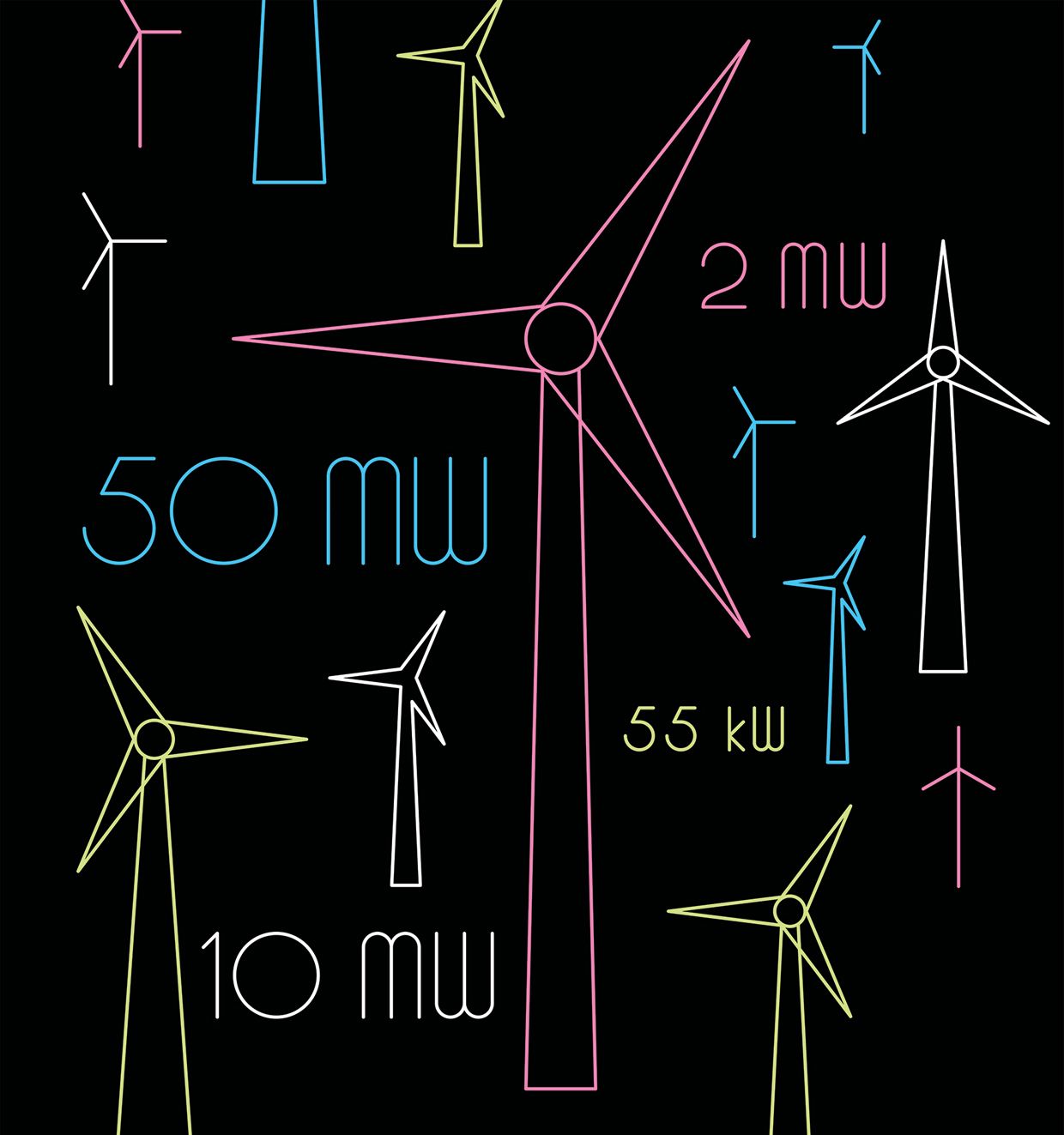Wind Turbines Just Keep Getting Bigger, But There’s a Limit
 Illustration: Greg Mably
Illustration: Greg Mably Wind turbines have certainly grown up. When the Danish firm Vestas began the trend toward gigantism, in 1981, its three-blade machines were capable of a mere 55 kilowatts. That figure rose to 500 kW in 1995, reached 2 MW in 1999, and today stands at 5.6 MW. In 2021, MHI Vestas Offshore Wind's V164 will rise 105 meters high at the hub, swing 80-meter blades, and generate up to 10 MW, making it the first commercially available double-digit turbine ever. Not to be left behind, General Electric's Renewable Energy is developing a 12-MW machine with a 260-meter tower and 107-meter blades, also rolling out by 2021.
That is clearly pushing the envelope, although it must be noted that still larger designs have been considered. In 2011, the UpWind project released what it called a predesign of a 20-MW offshore machine with a rotor diameter of 252 meters (three times the wingspan of an Airbus A380) and a hub diameter of 6 meters. So far, the limit of the largest conceptual designs stands at 50 MW, with height exceeding 300 meters and with 200-meter blades that could flex (much like palm fronds) in furious winds.
To imply, as an enthusiastic promoter did, that building such a structure would pose no fundamental technical problems because it stands no higher than the Eiffel tower, constructed 130 years ago, is to choose an inappropriate comparison. If the constructible height of an artifact were the determinant of wind-turbine design then we might as well refer to the Burj Khalifa in Dubai, a skyscraper that topped 800 meters in 2010, or to the Jeddah Tower, which will reach 1,000 meters in 2021. Erecting a tall tower is no great problem; it's quite another proposition, however, to engineer a tall tower that can support a massive nacelle and rotating blades for many years of safe operation.
Larger turbines must face the inescapable effects of scaling. Turbine power increases with the square of the radius swept by its blades: A turbine with blades twice as long would, theoretically, be four times as powerful. But the expansion of the surface swept by the rotor puts a greater strain on the entire assembly, and because blade mass should (at first glance) increase as a cube of blade length, larger designs should be extraordinarily heavy. In reality, designs using lightweight synthetic materials and balsa can keep the actual exponent to as little as 2.3.
Even so, the mass (and hence the cost) adds up. Each of the three blades of Vestas's 10-MW machine will weigh 35 metric tons, and the nacelle will come to nearly 400 tons. GE's record-breaking design will have blades of 55 tons, a nacelle of 600 tons, and a tower of 2,550 tons. Merely transporting such long and massive blades is an unusual challenge, although it could be made easier by using a segmented design.
Exploring likely limits of commercial capacity is more useful than forecasting specific maxima for given dates. Available wind turbine power [PDF] is equal to half the density of the air (which is 1.23 kilograms per cubic meter) times the area swept by the blades (pi times the radius squared) times the cube of wind velocity. Assuming a wind velocity of 12 meters per second and an energy-conversion coefficient of 0.4, then a 100-MW turbine would require rotors nearly 550 meters in diameter.
To predict when we'll get such a machine, just answer this question: When will we be able to produce 275-meter blades of plastic composites and balsa, figure out their transport and their coupling to nacelles hanging 300 meters above the ground, ensure their survival in cyclonic winds, and guarantee their reliable operation for at least 15 or 20 years? Not soon.
This article appears in the November 2019 print issue as "Wind Turbines: How Big?"